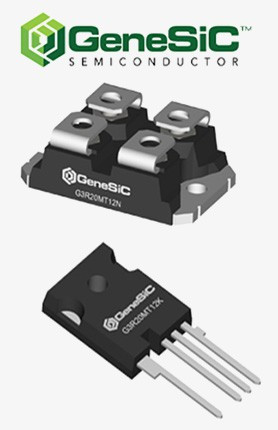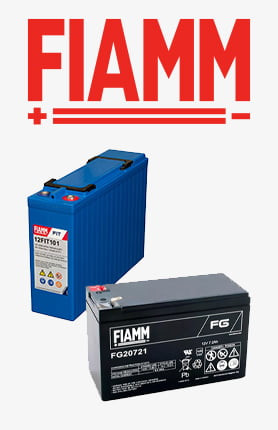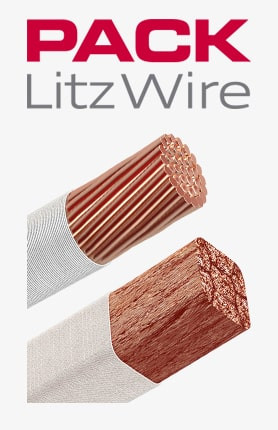Vous devez être connecté
-
WróćX
-
Composants
-
-
Category
-
Semi-conducteurs
- La diode
- Les thyristors
- Modules de puissance isolés
- Ponts redresseurs
-
Transistors
- Transistors | GeneSiC
- Modules MOSFET SiC | Mitsubishi
- Modules MOSFET SiC | STARPOWER
- Modules MOSFET SiC ABB
- Modules IGBT | MITSUBISHI
- Modules de transistors | MITSUBISHI
- Modules MOSFET | MITSUBISHI
- Modules de transistors | ABB
- Modules IGBT | POWEREX
- Modules IGBT | INFINEON (EUPEC)
- Composants semiconducteurs en carbure de silicium
- Przejdź do podkategorii
- Circuits de commande
- Blocs de puissance
- Przejdź do podkategorii
- Transducteurs électriques
-
Composants passifs (condensateurs, résistances, fusibles, filtres)
- Résistances
-
Fusibles
- Fusibles miniatures pour c.imp. série ABC et AGC
- Fusible rapides tubulaires
- Cartouches de courbe GL/GG et AM
- Cartouches ultrarapides
- Fusibles à action rapide (norme britannique et américaine)
- Fusibles à action rapide (norme européenne)
- Fusibles de traction
- Cartouche de haute tension
- Przejdź do podkategorii
-
Condensateurs
- Condensateurs pour moteurs
- Condensateurs électrolitiques
- Condensateurs de type snubbers
- Condensateurs de puissance
- Condensateurs pour circuits continus
- Condensateurs de compensation de puissance
- Condensateurs de haute tension
- Condensateurs pour chauffage par induction
- Condensateurs pour impulsions
- Condensateurs DC LINK
- Condensateurs pour circuits AC/DC
- Przejdź do podkategorii
- Filtres anti-interférences
- Supercondensateurs
- Protection contre les surtensions
- Filtres de détection des émissions TEMPEST
- Parafoudre
- Przejdź do podkategorii
-
Relais et contacteurs
- Théorie relais et contacteurs
- Relais statiques triphasés
- Relais statiques CC
- Régulateurs, circuits de commande et accessoires
- Démarrages progressifs et contacteurs inverseurs
- Relais electromécaniques
- Contacteurs
- Commutateurs rotatifs
-
Relais statiques monophasés
- Relais semi-conducteurs AC monophasés, série 1 | D2425 | D2450
- Relais à semi-conducteurs CA monophasés, séries CWA et CWD
- Relais à semi-conducteurs CA monophasés des séries CMRA et CMRD
- Relais à semi-conducteurs CA monophasés, série PS
- Relais semi-conducteurs AC double et quadruple, série D24 D, TD24 Q, H12D48 D
- Relais statiques monophasés, série GN
- Relais à semi-conducteurs CA monophasés, série CKR
- Relais AC monophasés SÉRIES ERDA ET ERAA pour rail DIN
- Relais CA monophasés pour courant 150A
- Relais à semi-conducteurs doubles intégrés à un dissipateur thermique pour un rail DIN
- Przejdź do podkategorii
- Relais statiques monophasé pour c.imp.
- Relais d'interface
- Przejdź do podkategorii
- Composants inductifs
- Radiateurs, varistances, protections thermiques
- Ventilateurs
- Climatiseurs et accessoires d'armoires électriques
-
Batteries, chargeurs, blocs d'alimentation tampon et onduleurs
- Batteries et Chargeurs - théorie
- Batteries Li-ion et non-standards. Systèmes de gestion des batteries (BMS)
- Batteries
- Chargeurs de batteries et accessoires
- Alimentation de secours UPS et alimentation tampon
- Convertisseurs de tension et accessoires pour photovoltaïque
- Stockage d'Energie
- Réservoirs de carburant
- Batteries lithium-ion
- Przejdź do podkategorii
-
Automatique industrielle
- Élévateurs Spiralift
- Pièces pour drones Futaba
- Interrupteurs de fin de course, micro-rupteurs
- Capteurs et convertisseurs
- Pyromètres
- Compteurs, Relais temporisés, Indicateurs de tableau
- Appareils industriels de protection
- Signalisation lumineuse et sonore
- Caméra thermique
- Afficheurs à LED
- Boutons et commutateurs
- Przejdź do podkategorii
-
Câbles et chemins de câbles
- Fils
- Passe-câbles et coupleurs
- Fils de Litz
- Câbles pour les applications spéciales
- Gaines
-
Tresses
- Tresses plates
- Tresses rondes
- Tresses très souples - plates
- Tresses très souples - rondes
- Tresses cuivre cylindriques
- Tresses cuivre cylindriques et protection
- Bandes de mise à la terre souples
- Tresses en acier zingué et inox
- Tresses isolantes en PVC - temp. 85°C
- Tresses plates en aluminium
- Kit de liaison - tresses et gaines
- Przejdź do podkategorii
- Equipement pour la traction
- Cosses
- Barres flexible isolées
- Barre flexibles multicouches
- Systèmes de traçage des câbles
- Przejdź do podkategorii
- Zobacz wszystkie kategorie
-
Semi-conducteurs
-
-
- Fournisseurs
-
Applications
- Alimentations (UPS) et systèmes de redressement
- Automatisation HVAC
- Automatisation industrielle
- Chauffage par induction
- Composants pour atmosphères potentiellement explosives (EX)
- Dispositifs de protection industriels
- Énergétique
- Energy bank
- Équipements pour armoires de distribution, de contrôle et de télécommunications
- Impression
- Machines à souder et machines à souder
- Machines de séchage et de traitement du bois
- Machines pour le thermoformage des plastiques
- Machines-outils CNC
- Mesure et régulation de la température
- Mesure et régulation de la température
- Mines, métallurgie et fondation
- Moteurs et transformateurs
- Traction de tram et de chemin de fer
- Variateurs CA et CC (onduleurs)
-
Installation
-
-
Inducteurs
-
-
Appareils à induction
-
-
Service
-
- Contact
- Zobacz wszystkie kategorie
Devices Intended for Explosion Hazard Zones

Electrical Devices Designed for Use in Explosive Atmospheres
Electrical devices designed for use in explosive atmospheres are products that incorporate construction solutions to eliminate or mitigate the possibility of igniting explosive mixtures outside these devices, both during normal operation and in fault conditions.
Electrical devices designed for use in explosive atmospheres are constructed, manufactured, tested, and marked according to the requirements of:
- Directive 94/9/EC ATEX of March 23, 1994;
- Regulation of the Minister of Economy of December 22, 2005, on essential requirements for devices and protective systems intended for use in explosive atmospheres;
- Multi-part standard EN 60079 regarding various types of construction for explosion-proof devices.
By definition, any electrically powered device—whether it uses AA/AAA batteries, 12/24V power supplies, mains power, or other sources—is capable of generating sparks that could potentially be effective sources of ignition during normal operation. Therefore, to use them in explosive zones, proper protection or construction according to the appropriate technology is necessary.
Explosion-Proof Device Construction
The construction of explosion-proof devices should ensure that the surface temperature of the enclosure and external elements is lower than the temperature of the explosive mixture in the surrounding space. Additionally, measures should be taken to prevent the formation of explosive mixtures inside the device. Explosion protection in electrical devices intended for use in the presence of gas mixtures can be achieved through:
- Protection against sparking
- Energy limitation in the circuit
- Separation of the ignition source from the explosion hazard zone
- Avoidance of flame ignition
- Use of non-flammable materials
- Temperature limitation
If an electrical device or Ex component must withstand particularly adverse working conditions—such as improper handling, moisture effects, temperature fluctuations, chemical influences, or corrosion—it is recommended that the user specifies these conditions to the manufacturer.
Special precautions should be taken if vibrations affect terminals, fuse holders, lamps, and electrical connections, potentially compromising safety, even if they meet the requirements of specific standards.
Electrical devices can only be used in hazardous locations if they meet the requirements of Annex II to Directive 1999/92/EC. In all zones, new devices must be selected based on the categories established in Directive 94/9/EC. According to explosion protection documents, working devices, including warning devices, must be designed, used, and maintained with proper attention to safety principles.
Device Groups for Ex Zones According to ATEX Directive
I – devices intended for use in mining operations where there is a methane or coal dust explosion hazard.
II – devices intended for use in locations with explosive atmospheres other than mining operations.
Device Categories
1 – a device designed to ensure a very high level of protection in atmospheres where explosion hazards are present continuously or frequently over long periods. In explosion hazard zones 0 (gases, vapors, mists) and 20 (dusts)
2 – a device designed to ensure a high level of protection in atmospheres where explosion hazards are present occasionally during normal operation. In explosion hazard zones 1 (gases, vapors, mists) and 21 (dusts)
3 – a device designed to ensure a normal level of protection in atmospheres where explosion hazards are unlikely, and if they occur, they are rare and only for short periods. In explosion hazard zones 2 (gases, vapors, mists) and 22 (dusts).
Work Atmosphere
G – device for use in explosive atmospheres created by flammable gases, vapors, mists
D – device for use in explosive atmospheres created by flammable dusts
The use of explosion-proof devices in explosive atmospheres is essential to the extent that improper construction or incorrect operation is considered one of the potential sources of effective ignition according to the PN-EN 1127-1:2011 standard. Given their widespread occurrence, this is a factor that must be strictly considered.
You should also be aware of the sources of ignition and the regulations for Ex zones. Learn more about them on our blog.
Articles similaires
 Now available – DC/DC converters from PREMIUM
Now available – DC/DC converters from PREMIUM
 New release in DACPOL lighting for lathes – Kira covers
New release in DACPOL lighting for lathes – Kira covers




Laissez un commentaire